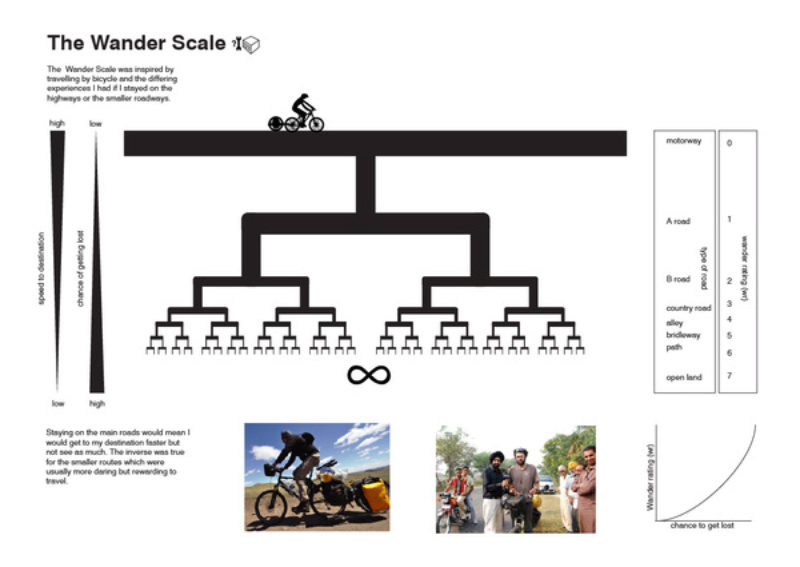POSTS

The Wander Scale
When you go travel from point A to point B you can either go via a direct or indirect route. Travelling over land, geography and route play a part.
A large, direct road probably offers the opportunity to travel at at higher speed. A smaller, indirect will probably offer less potential for a fast journey.
I did a project on my Goldsmiths Masters project inspired by the “Dérive” - a theory invented in 1956 by Guy Debord which involves walking around the city and paying attention to the psychological affect of the surroundings.
This idea combined with my travel experience caused me to consider the difference in the quality of experience between taking a direct main route vs more of a wandering, indrect route.
In an attempt to communicate this for an exhbition I created “The Wander Scale” which is a fractal pattern going from the main trunk branching off representing the minor routes.
If you stay on the large roads, you get there quickly and more assuredly but you see less and have less chance fpr chance meetings and serendipity. If you, on the other hand, stray from the course and keep straying, you will likely end up never reaching your goal. The goal is still important as it represents a sense of direction that steers your journey and drives it forward.
## References
https://en.wikipedia.org/wiki/D%C3%A9rive